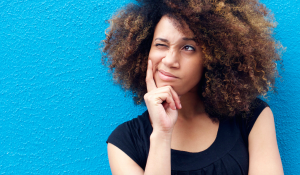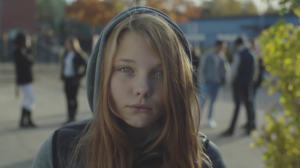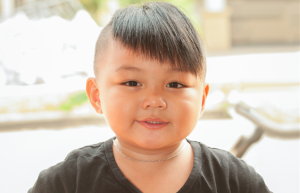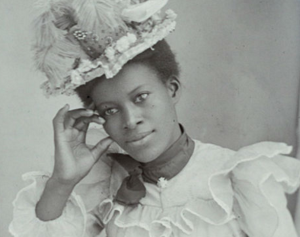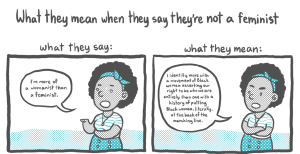How do you express yourself?
Self-expression is one of my favorite things to learn about people. You show the world who you are through clothing, art, dance, and more – and you often empower yourself and inspire other people in the process.
At the same time, I understand that your choices of self-expression are deeply personal and very intentional. So it can feel hard to be told that if your self-expression includes being inspired by clothing, art, and other elements originating from groups that you’re not a part of, you might be hurting someone through cultural appropriation.
And I think this feels hard because so many of us still struggle to understand what cultural appropriation is in a nuanced and complex way. Many people perceive it as policing their self-expression. But we’re really asking them to be more considerate and conscientious of how they engage with other people’s cultures.
So to put it simply, cultural appropriation is the harmful act of dominant groups – and the people, businesses, artists, designers, trends, and media outlets that belong to those groups – borrowing from marginalized cultures without respect, knowledge, or payment for what they’re taking.
If you’re so inspired by another culture that you’re replicating it for yourself, then in many cases, you’re participating in cultural appropriation.
You may see it this way: You should be able to do whatever you want when it comes to your own self-expression. Perhaps you’re all for ending oppression, but when people bring up cultural appropriation and tell you what you can and can’t do, it feels like you’re the one whose freedom is under attack.
I get where you’re coming from – it would upset me to have someone try to police my self-expression, too. But I think it’s time to change the conversation.
What if you tried a new approach to thinking about cultural appropriation?
Instead of saying, “I’m going to do whatever I want because it feels good to me,” you can think, “I can do whatever I want – so I’m going to choose to express myself in a way that doesn’t hurt other people.”
Instead of “I’m really inspired by that, so I’m claiming it for myself,” you can try, “I don’t have to own something in order to appreciate that it exists.”
And instead of “I want equality – where everyone can do whatever they want, and we don’t ‘see’ color,” we can go deeper. We can say, “I want justice – where we acknowledge that systems of oppression influence different people’s lives in different ways, depending on their identities. I want to create a world where we celebrate our differences instead of using them to mistreat each other.”
Let’s break that down.
In the United States, the system of white supremacy affects everyday life. For instance, white folks possess the vast majority of leadership roles in influential institutions like schools, workplaces, the courts, and the media.
This means that dominant rules, values, processes and expectations are more likely to reflect only white people’s norms, cultures, and understandings of the world – all of which comes from a place of being the least oppressed racial group in this country.
Basically, if you are white, whether you mean to be racist or not, you have the power to perpetuate institutional racism just by following the status quo, with the behavior that’s considered “normal.” That’s because the norm, in this country, follows a system of racism.
You may see harmless dress codes, standards of professionalism, and media character tropes – but all of these things can have a pretty powerful influence in characterizing the cultural traditions of people of color as “backwards,” “ugly,” or “too ethnic.”
In other words, white supremacy gives people the power to contribute in big and small ways to taking cultural traditions away from people of color. And people of color don’t actually have the power to stop you from doing that.
So that’s why avoiding cultural appropriation isn’t just about people telling you what you can and can’t do.
If that were the case, unpacking this issue would be a lot easier. I’d give you a simple list of dos and don’ts about participating in my culture. You’d know I wouldn’t like it if you wore a traditionally Black hairstyle, but I’m all for you eating soul food, because I’d never want someone to miss out on that.
But you wouldn’t be satisfied with an explanation that simply says you “can’t” do certain things. And to tell you the truth, neither would I.
If you just know something’s off-limits, that’s a good start, but you won’t actually know why it’s best to avoid cultural appropriation – and we’re not here to police each other. We’re here to understand and respect each other.
And you’ll probably come across more situations in which you don’t know how to avoid appropriation – and you might give up on figuring it all out because you think you’ll “never get it right.”
Don’t give up. Let’s talk instead about what avoiding cultural appropriation is really about – learning how to engage with people of other cultures without limiting their access to their own cultures in the process.
Here are some of the reasons why worrying about what you “can and can’t do” misses the point.
1. Context Is More Important Than Getting Stuck on ‘I Can’t Do This Because I’m White’
I don’t usually make blanket statements when it comes to cultural appropriation.
There are a few things – like blackface, brownface, yellowface, and redface – that are always out of line. But when it comes to most examples of appropriation, the general rule of “don’t do this because you’re white” misses a lot of the details.
So rather than focusing on what you “can and can’t do,” it’s far more important to consider the context of what you’re doing.
Context includes the power dynamics between different racial groups. For instance, in the US, you can recognize white supremacy’s influence in just about every industry.
Take the wedding industry. Unless you’re reading a wedding magazine specifically targeting women of color, it’s likely that you’ll see page after page seeing white brides in white dresses, and no mention at all of the diverse wedding traditions of people of color.
That’s because whiteness is considered the norm, while other ethnicities are othered.
How does this context come into play if you’re planning or attending a wedding?
You can take it step by step, from the moment you get inspired by a cultural practice from a marginalized group. For example, say you once attended a South Asian wedding, and you loved the bindi the bride was wearing.
To honor that adornment, you can learn about what the bindi means to South Asian people. You can also learn about how South Asian people are treated here in the United States. That will probably bring you to stories about people being mistreated just for being South Asian, and especially when following cultural traditions.
So then you can consider the impact of taking on these traditions for yourself. If you’re at a non-South Asian wedding in the United States, and you just decide to wear a bindi because you think it’s pretty, you’re erasing the significance of the bindi.
It’s not simply a matter of believing you “can’t” do it because you’re not South Asian. Notice that when Aarti Olivia wrote about some of the most culturally appropriated South Asian accessories, she didn’t simply say that non-South Asians should never use those things.
She explained the significance of items like the bindi, and said that it’s okay to wear one if you’re getting married to a South Asian person or you have a vermillion dot placed on you when you’re invited to attend an Indian festival or ritual.
But wearing it as nothing more than a cute fashion accessory makes it all the more difficult for South Asian people to follow their traditions without being othered for straying from dominant norms. It also belittles their struggle – when they have to fight against white supremacy in order to keep the traditions that help them survive, it’s insulting for people who don’t know that struggle to do it just for fun.
So instead of getting stuck on the idea that you “can’t” do something, just remember that with cultural appropriation, just like with everything else you do, context makes a difference in whether or not it’s appropriate.
If you can determine that formal attire is more appropriate for a wedding than sweatpants, then you can also use your critical thinking skills to apply different contexts to the question of cultural appropriation.
2. This Conversation Is More About Impact Than Intentions
When you dress up for Halloween, you’re just trying to have fun, and maybe to feel pretty in a glamorous costume or to get a laugh with a clever concept.
Who am I to tell you that you “can’t” do something you enjoy?
However, the thing is that cultural appropriation isn’t about your intentions – it’s totally possible to appropriate something without meaning to offend anyone.
Again, it’s a good start to know what might cause offense, and to consider things like whether or not someone has invited you to participate in their culture.
But, perhaps most importantly, you also need to think about the impact of what you’re doing. Don’t assume that your behavior is harmless just because you don’t have sinister intentions.
For instance, if you decide to wear an “Indian costume” for Halloween, your intentions might be totally harmless – you just want to have fun. But that doesn’t change the fact that you’re perpetuating some really harmful stereotypes.
Those mass-produced “Indian costumes” are terrible imitations of the traditional Native regalia that has deep significance for Indigenous people. It’s insulting to don these items as party wear instead of recognizing what traditional Native clothing really means.
Some of these costumes play up the trope of the “savage Indian” – a trope that has been used for centuries to justify killing and displacing Native people. Perceptions of Native people as “uncivilized” and inherently violent still contribute to conditions like higher rates of police brutality than any other group.
Other costumes represent the “Pocahottie” stereotype of the sexy Native woman – while Native women face the highest rates of sexual violence.
While your intentions are merely to have fun, the impact of these costumes includes dehumanizing Native people, treating them like mystical figures instead of real people, and spreading dangerous myths about who Native people are.
It’s not that you “can’t” dress like someone of another culture for Halloween – it’s that it’s ethical to consider that you could cause harm if you do. Since you have the freedom to choose whatever costume you want, you can make a choice that doesn’t perpetuate terrible ideas about a marginalized group.
You don’t lose anything by choosing another costume. You have countless other options, and you can have plenty of fun without cultural appropriation.
3. Marginalized People Don’t Have the Power to Ban You From Doing It
If we were actually talking about limiting your freedom to do what you want, this conversation would be very different.
Rather than talking to you about how to be more thoughtful, I’d probably be talking to lawmakers about getting some legal intervention. I’d lurk around fashion shows and malls, making citizens’ arrests whenever someone’s guilty of appropriation, and I’d probably be pretty nervous about ending up in jail if I accidentally appropriated another culture myself.
I don’t have time for all that. And it all sounds pretty ridiculous – not to mention impossible.
Because white supremacy dominates the US, people of color don’t have the institutional power to actually force you to stop doing something that causes us harm.
And I’m not interested in using force anyway. Punishing or shaming you for cultural appropriation goes directly agains the kind of culture change I’m trying to create.
Using force to make you stop would just replicate the harm of answering violence with more violence – like the criminal justice system that hurts so many people of color.
I want us to have other ways to connect with each other – not by hurting one another, but by supporting each other and looking out for each other’s needs.
As much as it frustrates me when white models like Gigi Hidad strut down runways wearing traditionally Black hairstyles, I’m not simply calling for those hairstyles to be banned.
I’d much prefer for fashion designers to understand how they’re hurting Black women and girls when they show our features as attractive only on white women.
Changing our culture to reach this understanding is going to require more than simply outlawing appropriation.
4. We Should Be Centering Marginalized People – Not Finding Ways to Give You Permission to Do Things Without Guilt
So I’ve said that cultural appropriation isn’t about what you “can and can’t do,” but that statement could go even further – it’s not about you at all.
Sure, when we talk about the impact of your actions, that includes you.
But the focus of the conversation should be about the people you’re affecting, not just about your freedom to do what you want.
Here’s the difference.
Día de los Muertos is a Mexican day of mourning. Traditions include elaborate face painting and creating altars in honor of the dead.
Sometimes in the US, non-Mexican people participate in Día de los Muertos. That’s not a problem on its own, but in some places, white Americans have crossed the line from participation to domination.
People like Aya de Leon have written about what that domination looks like – from treating this sacred day as an extension of Halloween to turning it into a disrespectful night of drunken revelry.
If we just focus on how to let drunken revelers continue having their fun, we’re missing the point. The focus of this conversation should be how we can restore the sacred space for Mexican Americans to continue their traditions in peace.
When you’re thinking about cultural traditions that help marginalized people survive and resist white supremacy, make sure you prioritize the needs of the people who have more at stake. Recognize that your actions don’t exist in a vacuum, and you can find other ways to have fun.
5. This Conversation Is Just Asking You to Be Thoughtful – Not About Inciting Rage
Can you tell just by looking at someone if they’re appropriating another culture?
In many cases, you can’t. You don’t know what their background is, or if they’ve been invited to participate in that culture.
So if you’re worried about other people policing what you do, you should know that that’s not what I’m calling for here. I’m just asking you to be thoughtful about your own actions.
For instance, if you’re inspired by Miley Cyrus and you want to get your twerk on, I won’t stop you. But since twerking originated in the Black community, there are two very different ways to go about it.
You could recognize where twerking comes from, and give admiration and credit to the Black women who do it well. Or you could claim it for yourself and boast that you do it better.
Can you guess which ones counts as appropriation? You guessed it – the second option is the one that causes harm.
One dance studio, which credits Miley Cyrus for bringing twerking to light, unfortunately took this route. Their white twerk instructor rejected Kelechi Okafor, a Black personal trainer and twerk instructor, as a workshop leader. And she did it by insulting Kelechi’s style, saying that the studio’s style is better, and Kelechi’s is “basic.”
This is a common pattern, and part of the problem with cultural appropriation. Not just participating in another culture, but taking it away from the people who created it, erasing the origins, and claiming that white people can do it better.
It’s part of normalizing whiteness – saying that things are strange and “too ethnic” when people of color do them, but improved (or totally new) when white people take them on.
Black women are often shamed for our bodies, our self-expression, and our sexuality. All of this comes into play when the dominant culture sees Black women’s twerking as a lewd act instead of a valid form of self-expression.
But then Miley Cyrus imitates us, and she’s seen as “empowered” and even given credit for making twerking “cool.”
You don’t have to avoid twerking altogether in order to avoid being part of the problem. But have some empathy for our struggles, and realize that it’s possible for you to add to them.
6. We Can Talk About the Positive Side of Exchanging Our Cultures
If you think conversations on cultural appropriation are all about what you’re doing wrong, then you’re missing out on the part that’s about when things go right.
Personally, I’d be dismayed if we just reduced to this to saying we should never share our cultures with each other. Segregation is not the point.
To address the problems with cultural appropriation, we can actually talk about the positives of sharing our cultures without hurting each other.
For instance, I love delicious food, and I wouldn’t have some of my favorite things to eat without access to dishes from other cultures.
But unfortunately, some of the stories of how those foods have gotten to this country include some harrowing truths. The US has invaded other countries, stolen their resources, and exploited their people’s labor to get “exotic” flavors.
Still today, Americans often treat foreign foods like they’re strange and disgusting – until they become “trendy” and commercialized by white and Western people.
With resources like Rachel Kuo’s feminist guide to being a foodie without appropriation, we can avoid participating in this exploitation and still eat delicious foods from other cultures.
In fact, by avoiding appropriation, we can actually get the best options for diverse dining experiences. We can eat dishes that are authentic, instead of their mass-produced imitations. We can support people who rely on their culture’s food as a source of income, instead of unethical corporations that steal their recipes for profit.
7. Talking About What You ‘Can and Can’t Do’ Is a Huge Oversimplification
As you’ve probably gathered by now, the question of whether or not you “can” do something misses the actual point of cultural appropriation.
Cultural appropriation is about history – our history of colonization, imperialism, and genocide that tries to wipe out people of color and our cultures.
It’s also about the current influence of white supremacy, and other systems that normalize one group over others.
Prioritizing white people over people of color, able-bodied folks over physically disabled folks, and Christians over people of other faiths means that all kinds of dominant groups can cause harm by appropriating from marginalized people.
This conversation is about how to be thoughtful citizens of the world, considering how we affect each other’s lives with our everyday actions.
It’s about how appropriation is a symptom of a larger problem – the way we’re encouraged to dominate other groups instead of respecting our differences.
It’s so much more than what we “can and can’t do.”
Think of it this way: When another culture dominates yours, you’re left with fewer resources to survive.
You’re constantly told that your identity makes you a less valuable member of society, and that you have to assimilate to fit in with the dominant culture in order to survive.
So your cultural self-expression is one way for you to resist that pressure. Cultural traditions give marginalized people tools to be proud of themselves when the rest of society says they should feel ashamed.
These traditions are some of the ways we can honor our ancestors, celebrate ourselves and others in our community, and pass our knowledge and survival tools down to future generations. This is how we find hope for holding on to our identities and coping with oppression every day.
I wouldn’t want to take your sources of self-expression away, and I hope you can respect that other people also need to express who they are. Don’t take that away by claiming other cultural expressions for yourself.
[do_widget id=’text-101′]
Maisha Z. Johnson is the Digital Content Associate and Staff Writer of Everyday Feminism. You can find her writing at the intersections and shamelessly indulging in her obsession with pop culture around the web. Maisha’s past work includes Community United Against Violence (CUAV), the nation’s oldest LGBTQ anti-violence organization, and Fired Up!, a program of California Coalition for Women Prisoners. Through her own project, Inkblot Arts, Maisha taps into the creative arts and digital media to amplify the voices of those often silenced. Like her on Facebook or follow her on Twitter @mzjwords.
Search our 3000+ articles!
Read our articles about:
Our online racial justice training
Used by hundreds of universities, non-profits, and businesses.
Click to learn more


